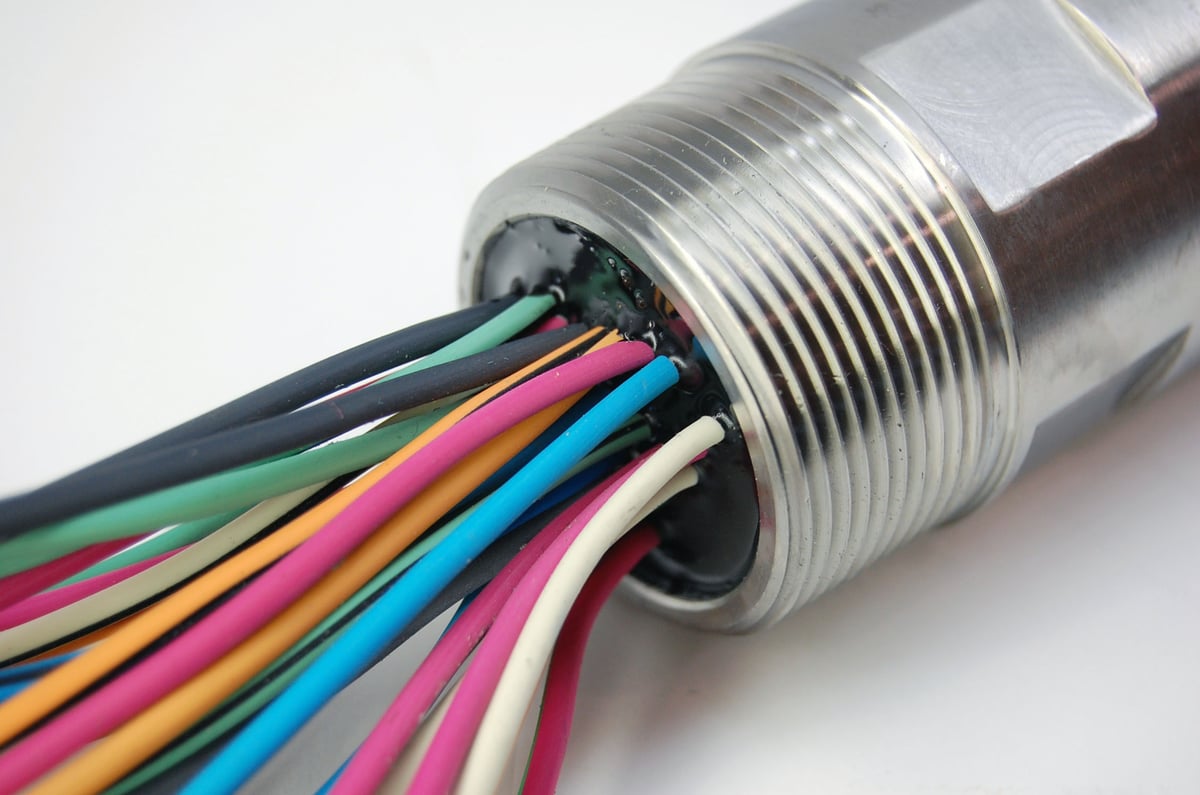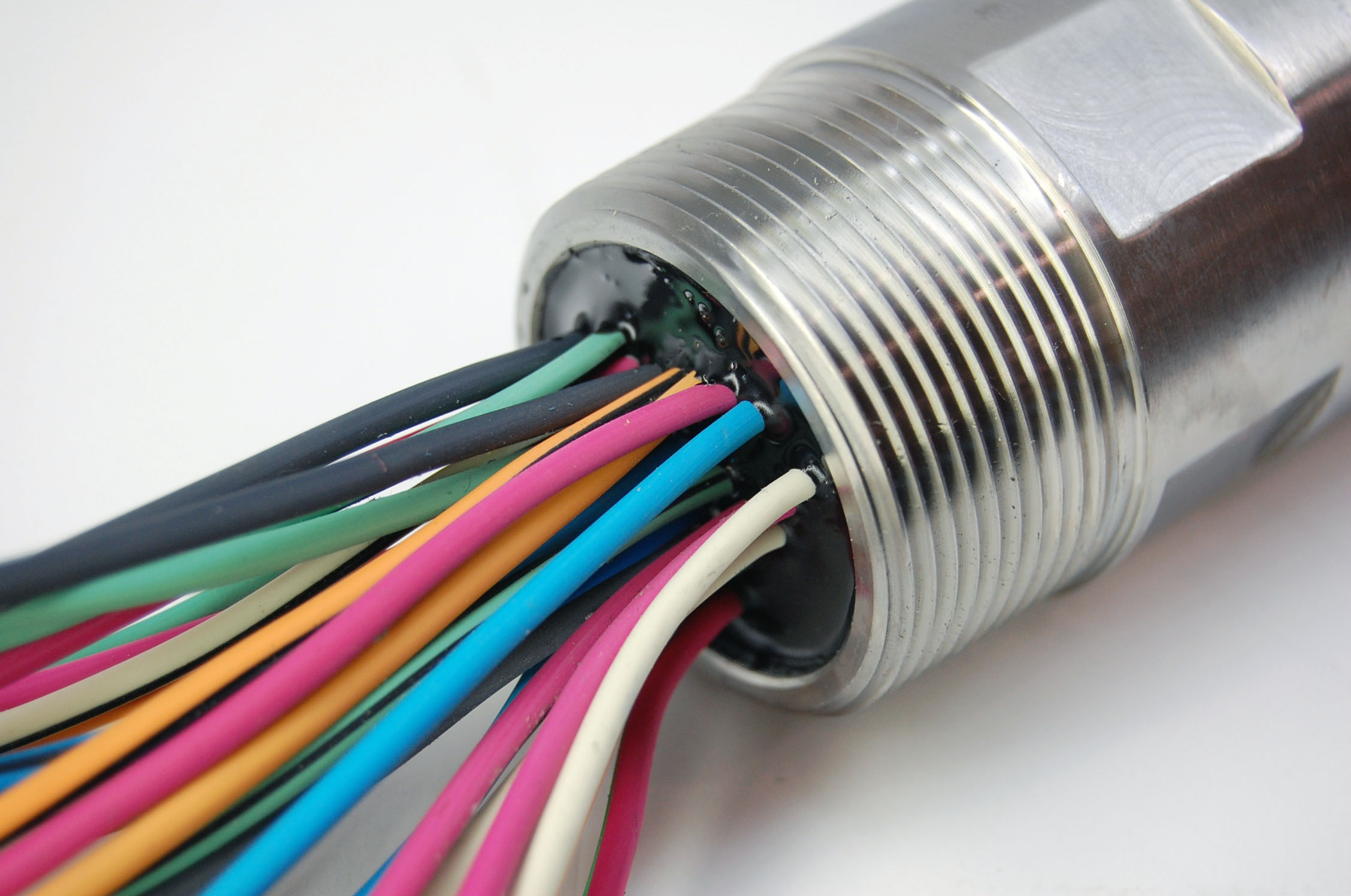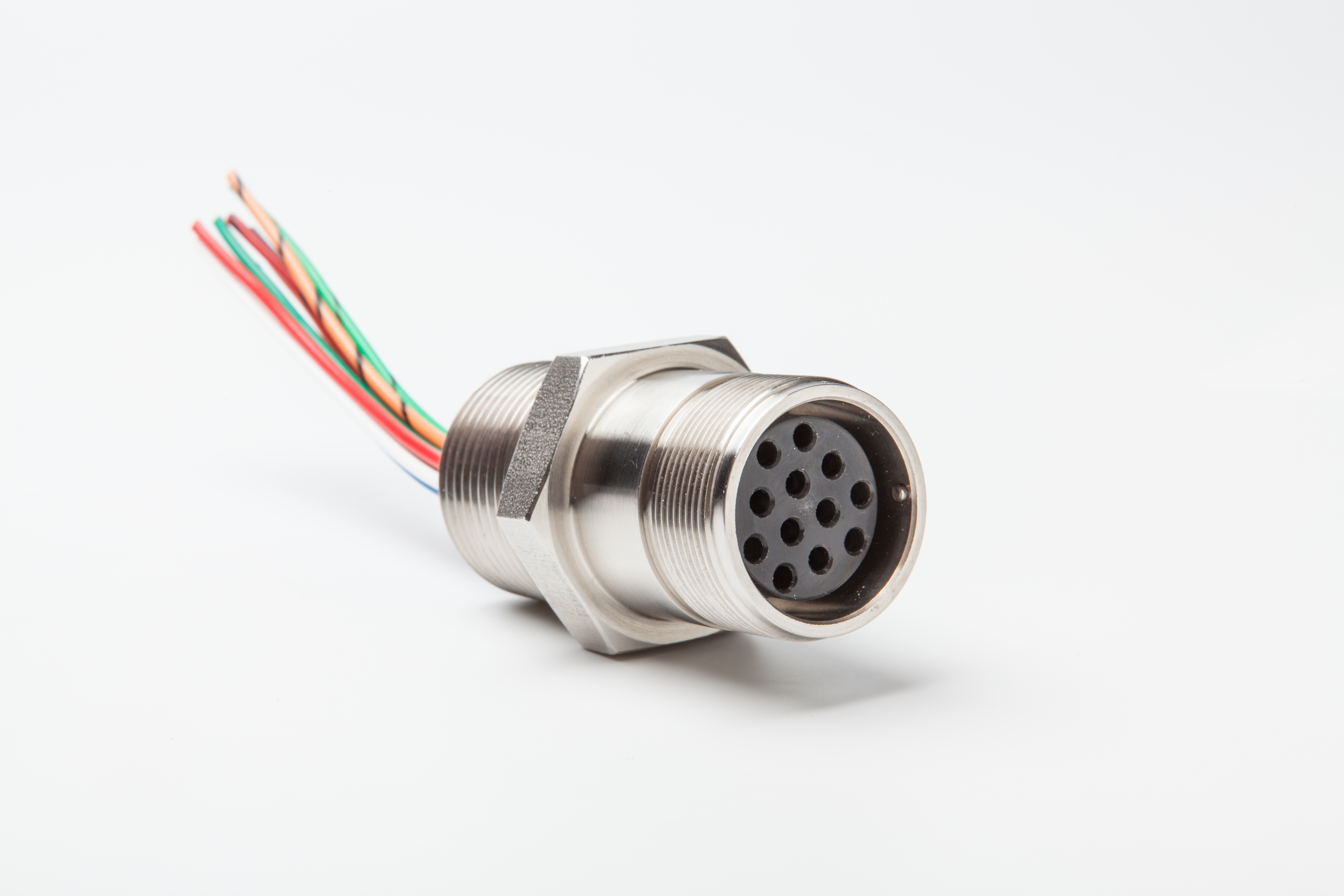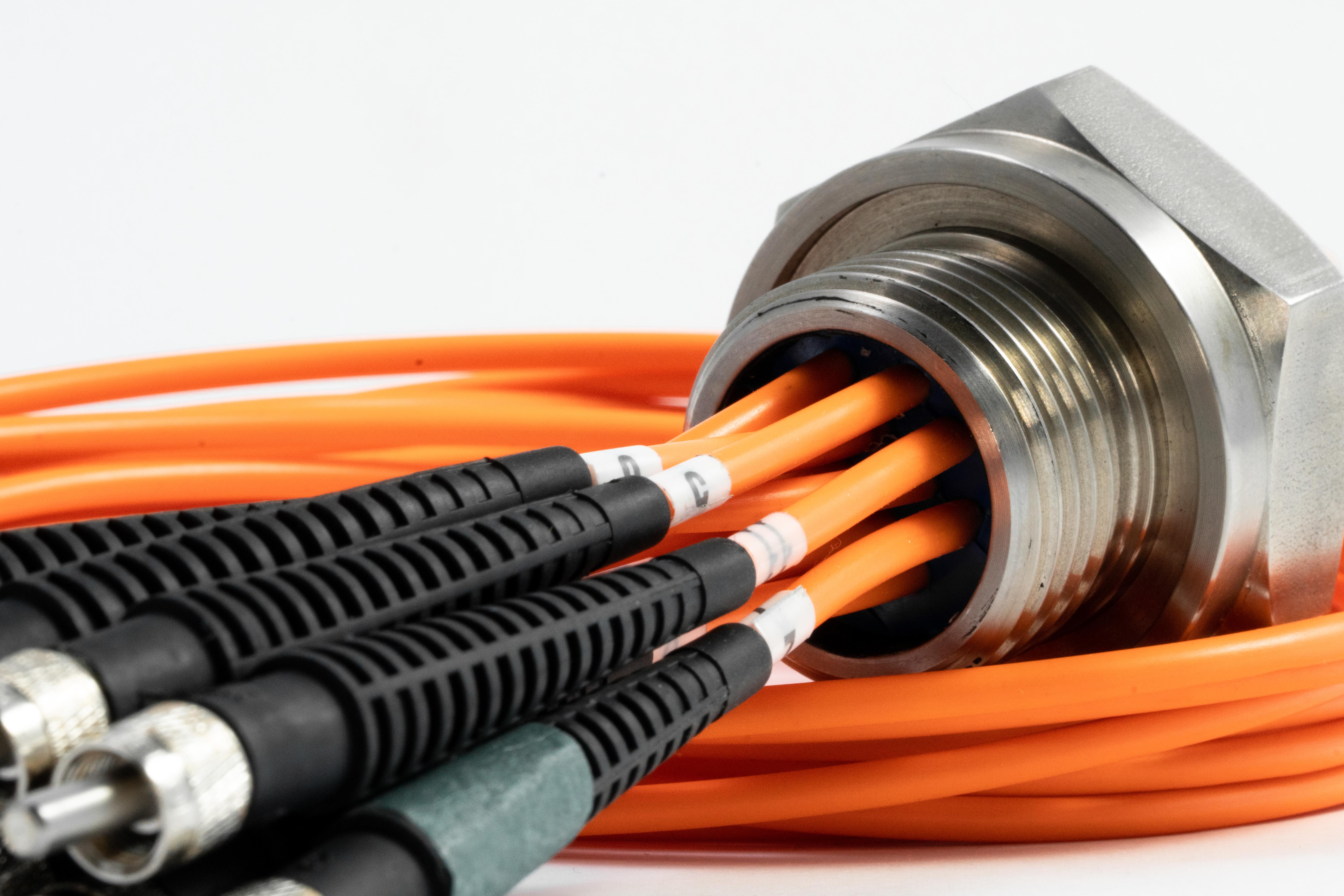Bulkhead connectors are familiar, but not always the best choice
Engineers who work with pressure and vacuum chambers usually reach for off-the-shelf sealed bulkhead connectors when they need to pass power and signal wires through the chamber wall. And while these connectors may seem like the best or only way to breach the chamber walls, they can actually drive cost, impose unnecessary mechanical design constraints and trigger electrical problems. So what’s the alternative? Wire feedthroughs hermetically sealed with epoxy.
These hermetically sealed wire feedthroughs allow all the conductors in a wire harness to pass through the chamber wall without losing pressure or vacuum. In the right application, wire feedthroughs permit design flexibility that’s not possible with off-the-shelf connectors. They also improve electrical performance and overall system efficiency by eliminating the voltage drop and contact resistance issues that affect connectors. And although they are custom by definition, hermetically sealed wire feedthroughs will deliver a lower installed cost than a comparable bulkhead connector when specified into the right application.
It’s important to stress that point about the right application. The most obvious reason to select a connector over continuous feedthrough comes down to the need to disconnect what’s inside the chamber from what’s outside it.
For systems that need a quick connect or disconnect on one or both sides of the chamber wall, bulkhead connectors really are the best bet. In these cases, though, it pays to pick the highest-quality connectors you can find to avoid problems with electrical losses and substandard sealing performance. Most feedthrough applications, however, do not need any quick connect capabilities. Consider, for example, the feedthroughs used in military ordinance control applications. These tend to be “sealed for life,” and don’t require quick disconnects. Instead, the main design consideration is designing a robust feedthrough that can resist the mechanical stresses of the battlefield and minimize electrical losses.
Many civilian applications fall in this category, too. High voltage electrical switches, semiconductor wafer processing equipment, medical imaging systems and space simulation vacuum chambers are just a few applications that may not require a quick disconnect but do require robust sealing and electrical performance. If your application doesn’t need frequent disconnects on one or both sides of the sealed chamber, it pays to consider continuous wire feedthroughs before ordering an off-the-shelf connector. If you do, you can benefit from increased design flexibility, improved performance and reduced cost.
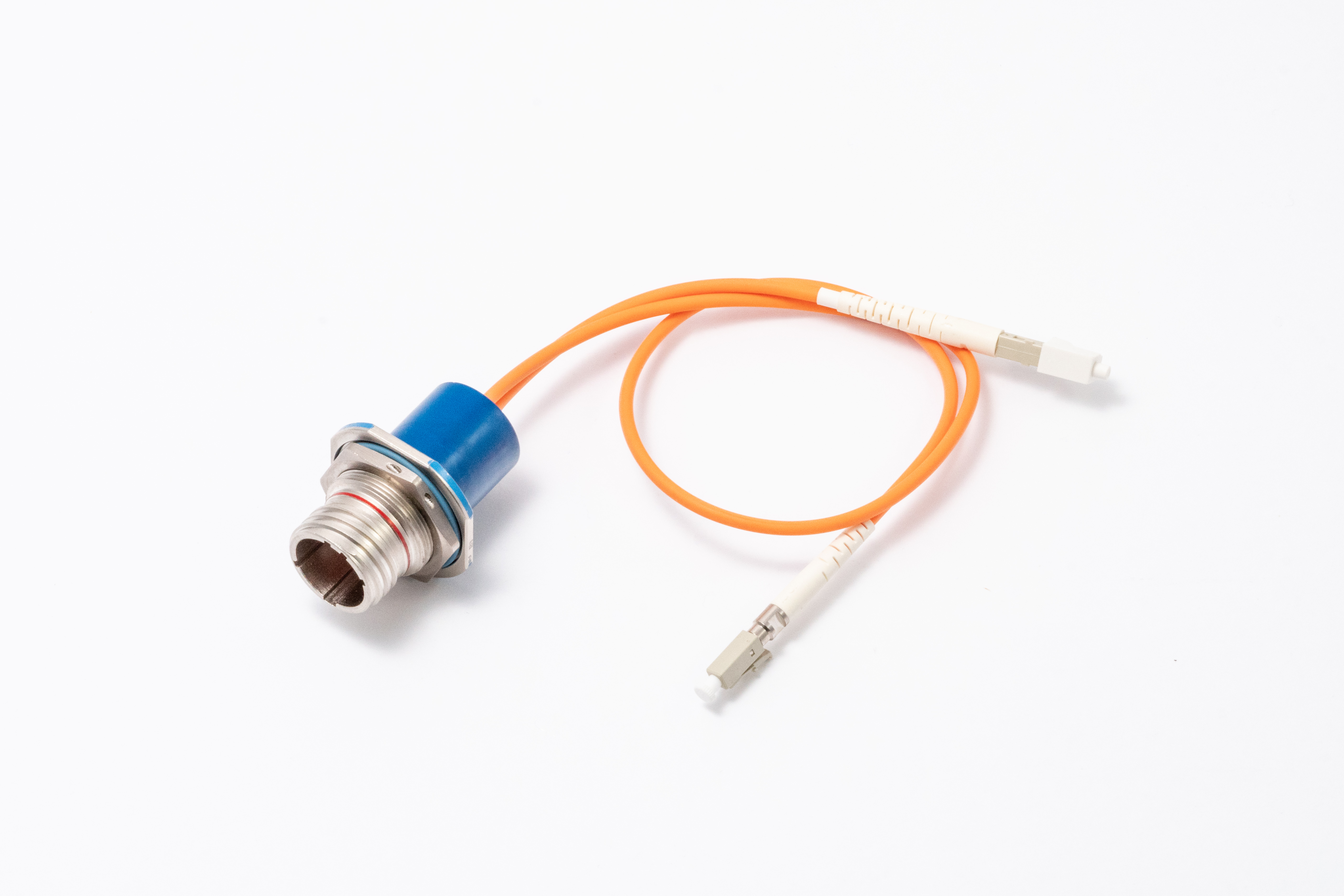
Making Connectors Hermetic
When the application requires a disconnect on one or both sides of the pressure or vacuum wall, you probably do need a hermetic bulkhead connector. However, not all hermetic connectors live up to their name.
Many bulk-manufactured hermetic connectors have true leakage rates far above what you would expect from their specifications. We’ve found leakage rates specifications for some off-the-shelf hermetic connectors understate actual leakage rates by an order of magnitude. Additionally, they can be fragile and susceptible to leakage after mechanical shock or thermal cycles. How do we know that? We offer an epoxy potting treatment that “fills the gaps” in third-party hermetic connectors whose leakage rates are not what they should be. As part of that process, which is subject to 100% quality assurance, we have conducted thousands of leakage tests on off-the-shelf hermetic connectors and found many lacking. Fortunately, the epoxy treatment often adds less cost than upgrading to a connector with true hermetic performance. We can also apply the epoxy treatment to non-hermetic box mount connectors. Aside from the cost reduction offered by the use of inexpensive plastic and plated steel connectors, this solution also increases the design flexibility. We can treat nearly all types of commercial connectors. So you can pick connectors based on pin configuration and technical factors other than sealing.
As a side benefit, the epoxy back potting of the connector often allows crimped rather than soldered
wire connections for a further savings in assembly costs. And it also allows for hermetic connectors to be fully submersible in their mated condition, which is an increasingly common requirement in power distribution and oil-and-gas applications.
Wire Feedthroughs Increase Design Flexibility
Off-the-shelf bulkhead conductors can address a reasonable number of application requirements, but they do impose fixed limits in the number and gauge of conductors they can handle. Even a large offering of standard bulkhead connectors may accommodate just four wire gauges with typically only 10 pin configurations per wire gauge. Additionally, mixed wire gauge connectors are often unavailable or special order.
Bottom line is that it’s often difficult to find an off-the-shelf connector that’s exactly right for the job at hand, which leads to compromises and over-engineering as engineers try to adapt the application requirements to available connectors rather than the other way around. Continuous wire feedthroughs, by contrast, can literally contain thousands of conductors—or just a handful if that’s all the application requires. Equally important, continuous wire feedthroughs give you the ability to mix and match conductors in ways that off-the-shelf connectors do not. For an example, consider magnetic bearing applications. They tend to combine twisted shielded pairs and thermocouple pairs that would be incompatible in most off-the-shelf
connectors without signal degradation.
Wire feedthroughs also tend to be more space efficient than off-the-shelf connectors in a couple of ways. For one, feedthroughs have a conductor density advantage. Compared to connectors, well-designed feedthroughs can easily double the number of conductors that can squeeze through a given opening. This density advantage often allows a single wire feedthrough that combines all the application’s power and signal wires to take the place of multiple bulkhead connectors.
For another, feedthroughs don’t protrude from the bulkhead the way connectors do. As a result, they can offer more clearance for moving machine parts inside or outside the chamber.
The design flexibility and space savings offered by continuous wire feedthroughs obviously makes a difference when designing with new pressure or vacuum systems, but existing systems can benefit too. Engineers often need to add new sensors or instrumentation to existing pressure or vacuum chambers. These retrofit jobs can cause a lot of pain if the standard connector or opening in the chamber wall won’t allow even a few more conductors to pass through. Wire feedthroughs can usually be engineered to squeeze in a few more conductors.
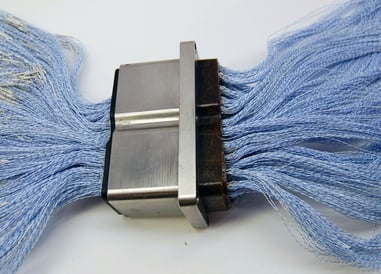
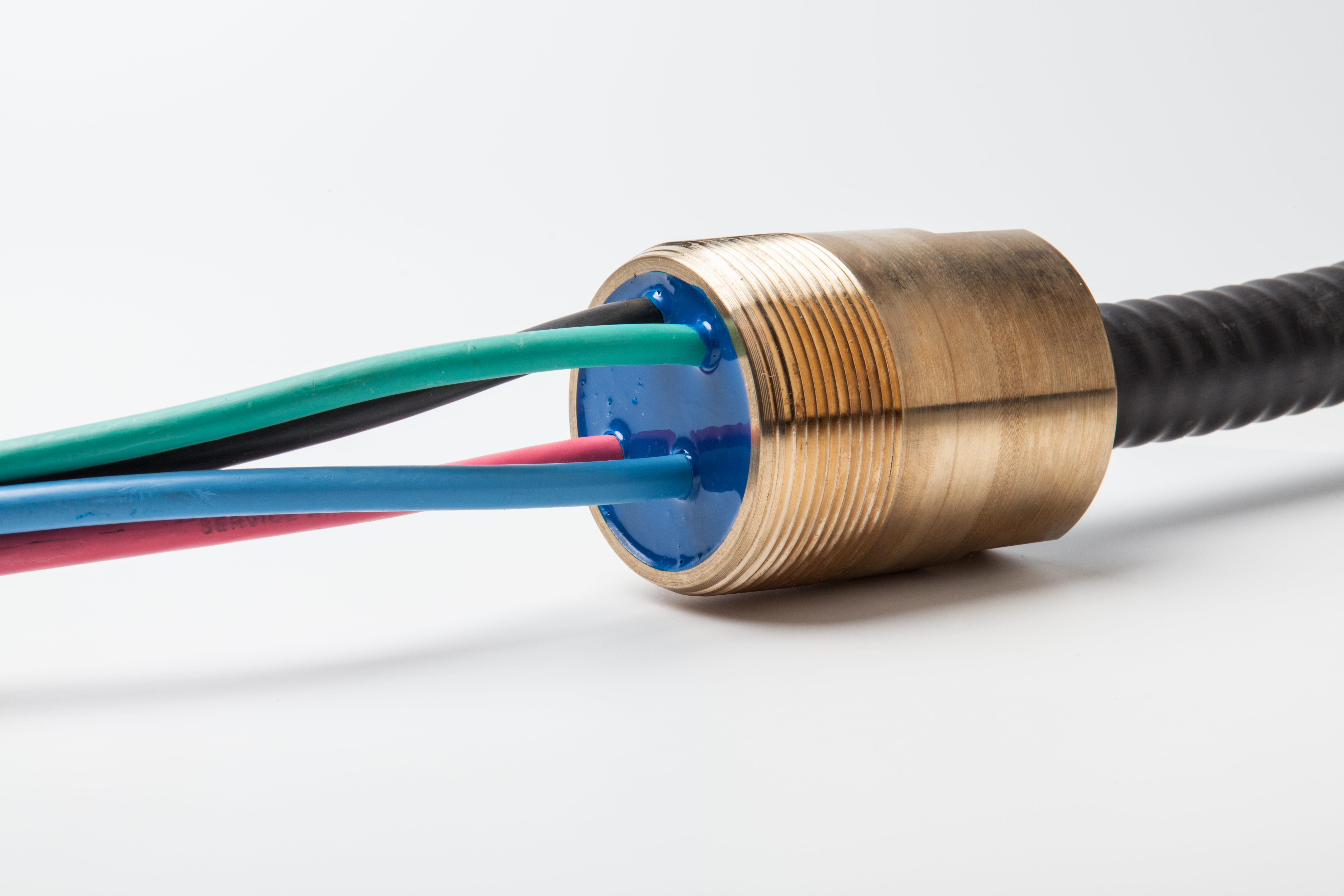
Continuous wire feedthroughs can literally contain thousands of conductors— or just a handful if that’s all the application requires.
Wire Feedthroughs Perform Better
Even the best electrical connectors have more losses than a continuous wire harness. For instance, typical voltage drop for connectors is greater than 1 mV per crimp and another 1 mV or more across the mated pin and socket. Contact resistance for the same connector would typically be as high as 100 mΩ. That’s enough to make a difference in thermocouple and other sensing applications that benefit from signal integrity.
Wire feedthroughs can also provide an edge in mechanical performance. Unlike bulkhead connectors, a wire feedthrough is not a wear item whose lifecycle depends on a finite number of mating and un-mating cycles. In non-flex applications, the lifecycle of a wire feedthrough equals that of the wire harness itself. There’s no extra failure mode as there would be with a connectorized feedthrough.
The idea that wire feedthroughs can offer superior performance may come as a surprise if you have bought into the myth that epoxy-based feedthroughs trade off performance attributes such as sealing or outgassing. But modern epoxy formulations and manufacturing techniques have busted that myth.
Take our epoxy hermetic sealing technology as an example. It seals to 1x10-9 SCCM He/second in vacuums as powerful as 1x10-8 Torr and under pressures as high as 15,000 psi. Many off-the-shelf connectors listed as “hermetic” exhibit leakage rates of 1x10-7 SCCM He/second or greater. And because connectors are rarely inspected in the environment, the actual leakage rates may be even worse. This disconnect between leakage specs and actual performance is so widespread that we offer an aftermarket process to seal hermetic box mount connectors made by other manufacturers (see sidebar).
As for outgassing, we often encapsulate wires in epoxy grades that meet NASA’s ASTM E-595 low outgassing specification with just 0.26% weight loss and less than 0.002% VCM.
One last note about epoxies: They are well known for their sturdy mechanical properties as well as resistance to chemicals and temperature extremes. These properties make them well suited to challenging operating environments.
Wire Feedthroughs Remove Cost
If one myth about feedthroughs relates to its performance, another has to do with cost. It’s tempting to think that a bulkhead connector from a catalog or website will cost less than a custom engineered wire feedthrough. Yet nothing could be further from the truth if you consider the total installed cost of the two feedthrough technologies.
Remember that a single continuous wire feedthrough with just one wire harness can often replace multiple bulkhead connectors, each with its own wire harness. Most of the savings from feedthroughs arise from the reduction in the number of individual wire harnesses that must be designed, manufactured and assembled. But there’s more. By eliminating bulkhead connectors, engineers can reduce BOM items and simplify supply chains. They can also avoid the costs associated with over-specifying connectors, which is common when off-the-shelf models cannot meet the application requirements. Finally, engineers can spend more time on their core engineering competencies rather than designing wire harnesses.
These cost factors add up quickly. On a typical industrial feedthrough application, such as a magnetic bearing, a hermetically sealed wire feedthrough will cost about 50% less than a glass-to-metal connector. This estimate assumes a single off-the-shelf bulkhead connector can handle the application requirements. If multiple connectors are needed to handle all the power and signal, then the cost advantage can swing even more dramatically to continuous wire feedthroughs.
One other cost factor to consider comes down to lead times, which can affect time-to-market costs for new systems and maintenance costs for existing ones. If you happen to find a connector that truly meets your application requirements, speedy delivery may be a good justification for going off-the-shelf.
Keep in mind, however, that custom engineered wire feedthroughs aren’t necessarily behind when it comes to delivery times. We routinely turn around custom engineered hermetic wire feedthroughs in as little as one week, while we’ve seen delivery times of 10 or more weeks for some off-the-shelf connectors. And if you need to go to a custom connector, lead times could be even longer, assuming your application has the production volumes to justify a custom design in the first place.
None of the points we’ve mentioned should be taken to suggest that bulkhead connectors, whether off-the-shelf or custom, are not a good solution for passing power and signal wires into pressure or vacuum systems. We design and manufacture hermetically sealed bulkhead connectors ourselves, and we have developed an epoxy treatment that turns standard box mount connectors into fully hermetic connectors. So we are big fans of hermetic connectors.
What we are suggesting, however, is that connectors should not be the automatic choice when wires need to pass through a pressure or vacuum wall. Take the time to assess whether a hermetically sealed wire feedthrough is a better choice. If it is, the payoff can be enormous.

